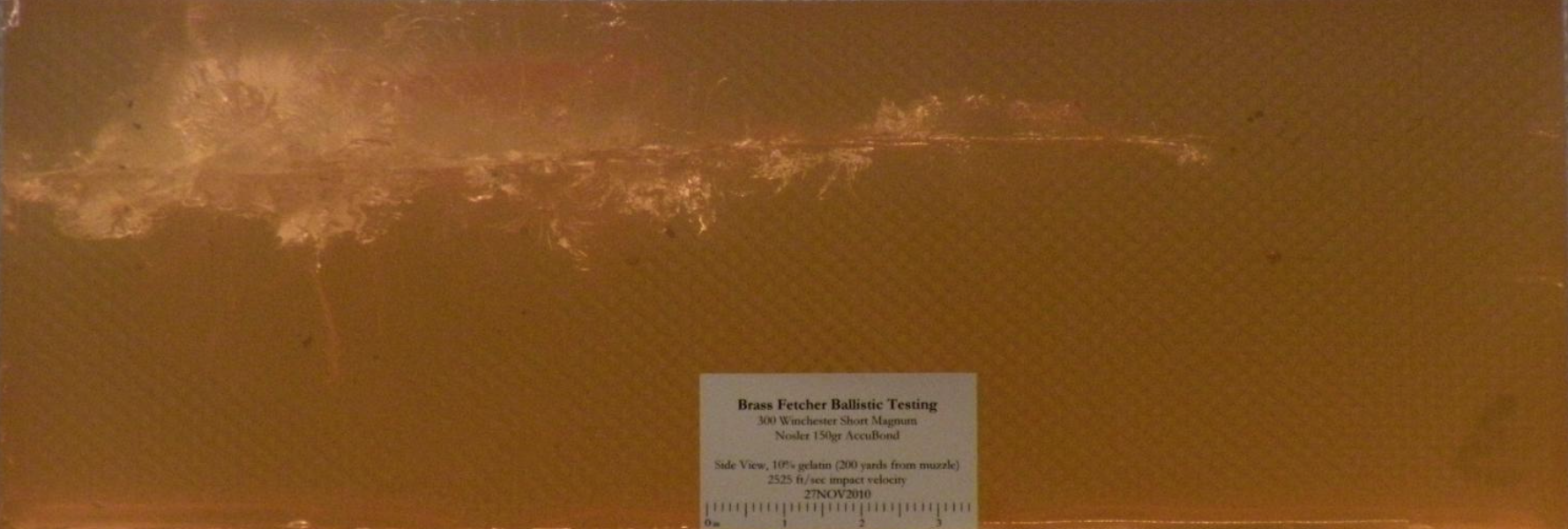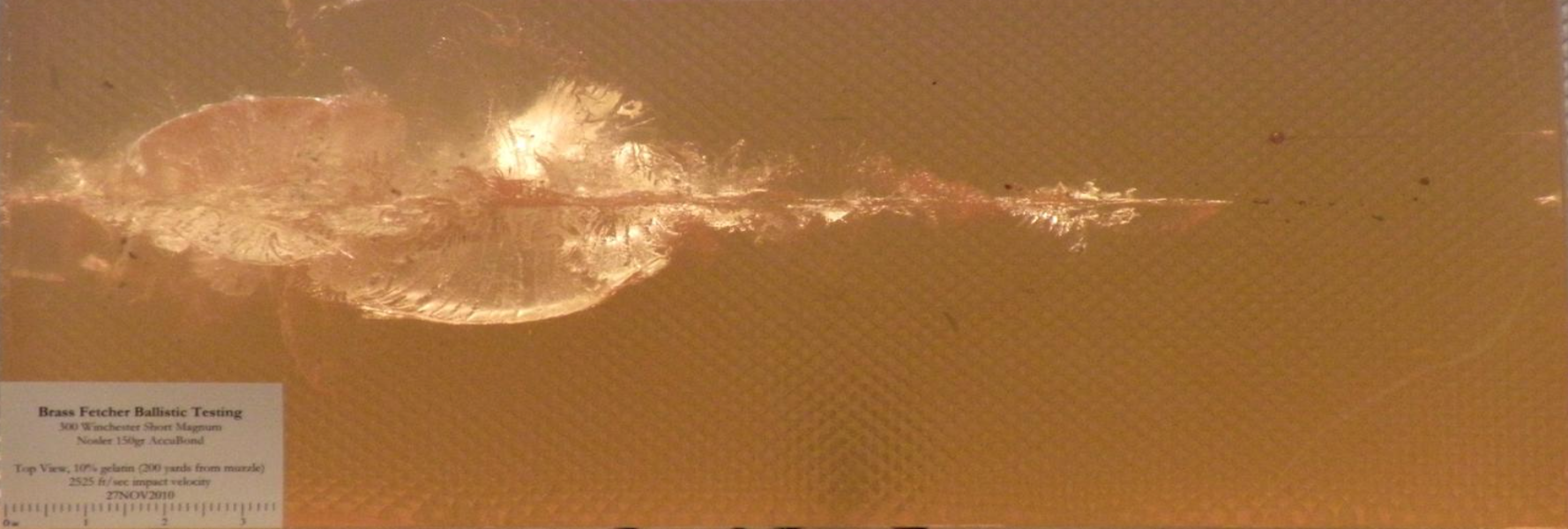Brass Fetcher Ballistic Testing
Terminal Performance of the Nosler 150gr AccuBond Fired from a .300 Winchester Short Magnum Rifle into 10% Ballistic Gelatin Blocks

Notes:
Weapon – SAKO 85 Finnlight rifle (.300WSM); with 24.4” barrel length
Load # Handloaded ammunition
Distance – 10 feet, 300 feet, 600 feet from muzzle
Introduction
This particular test event was conducted in order to evaluate the close and medium range performance of the 30 caliber Nosler 150gr AccuBond projectile. Commonly used for medium-game hunting in North America, this bullet is useful for .308WIN, .30-06 Springfield and .300 Magnum cartridges among many others. While, at the request of the test proponent, the tested cartridge was a downloaded .300WSM, the actual recorded impact velocities are directly relatable to .308WIN and .30-06 Springfield rifles and indirectly relatable to cartridges firing a 150gr bullet at higher velocities, as will be explored further.

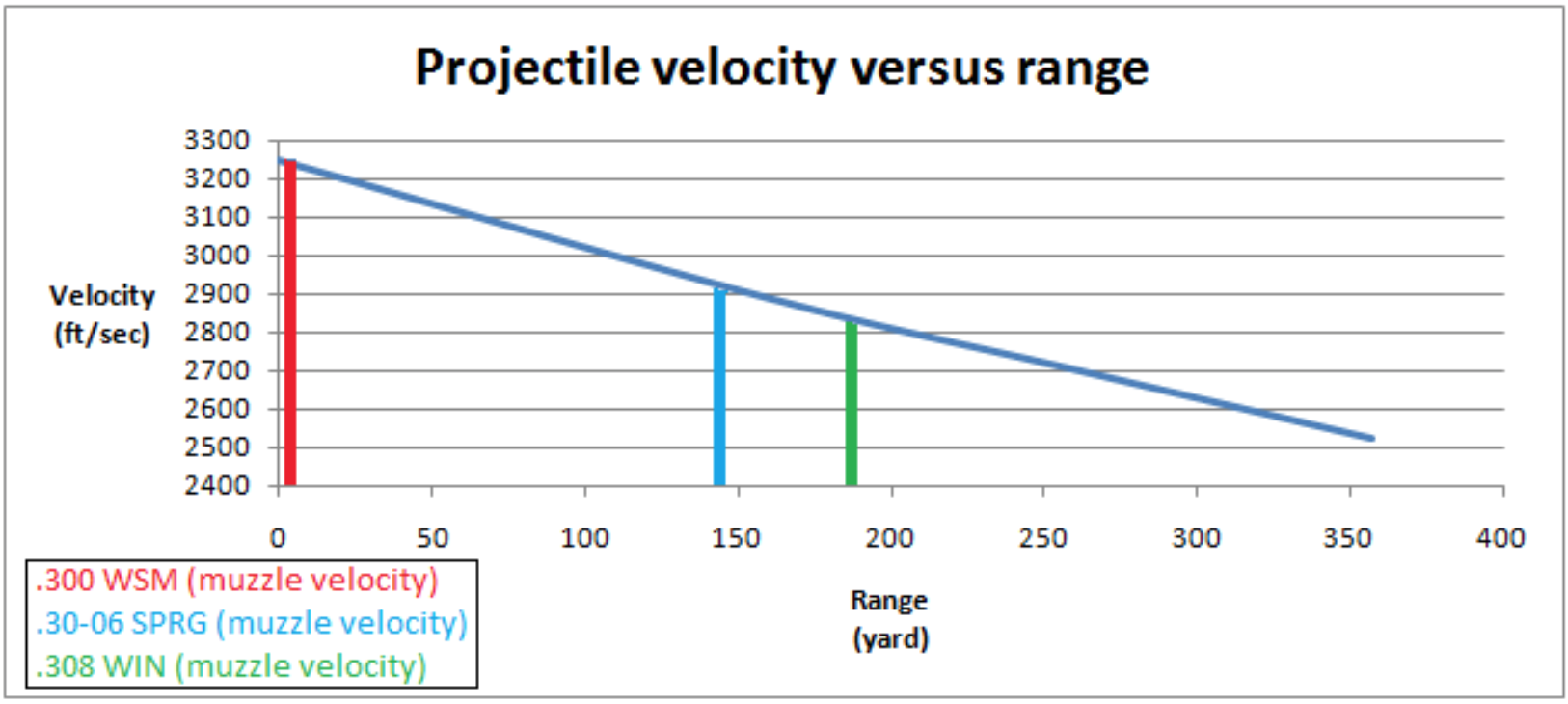
Figure 1 illustrates what velocity is obtainable from the various 30-caliber cartridges, firing the 150gr AccuBond bullet. From the graph, we can see that a 145 yard hit from a .300 WSM rifle, firing at maximum muzzle velocity, is equivalent in initial kinetic energy to a muzzle distance shot with the same bullet from a .30-06 rifle. Just the same, the velocity advantage of a .30-06 (compared to a .308 WIN) is negated at 40 yards distance from the muzzle.
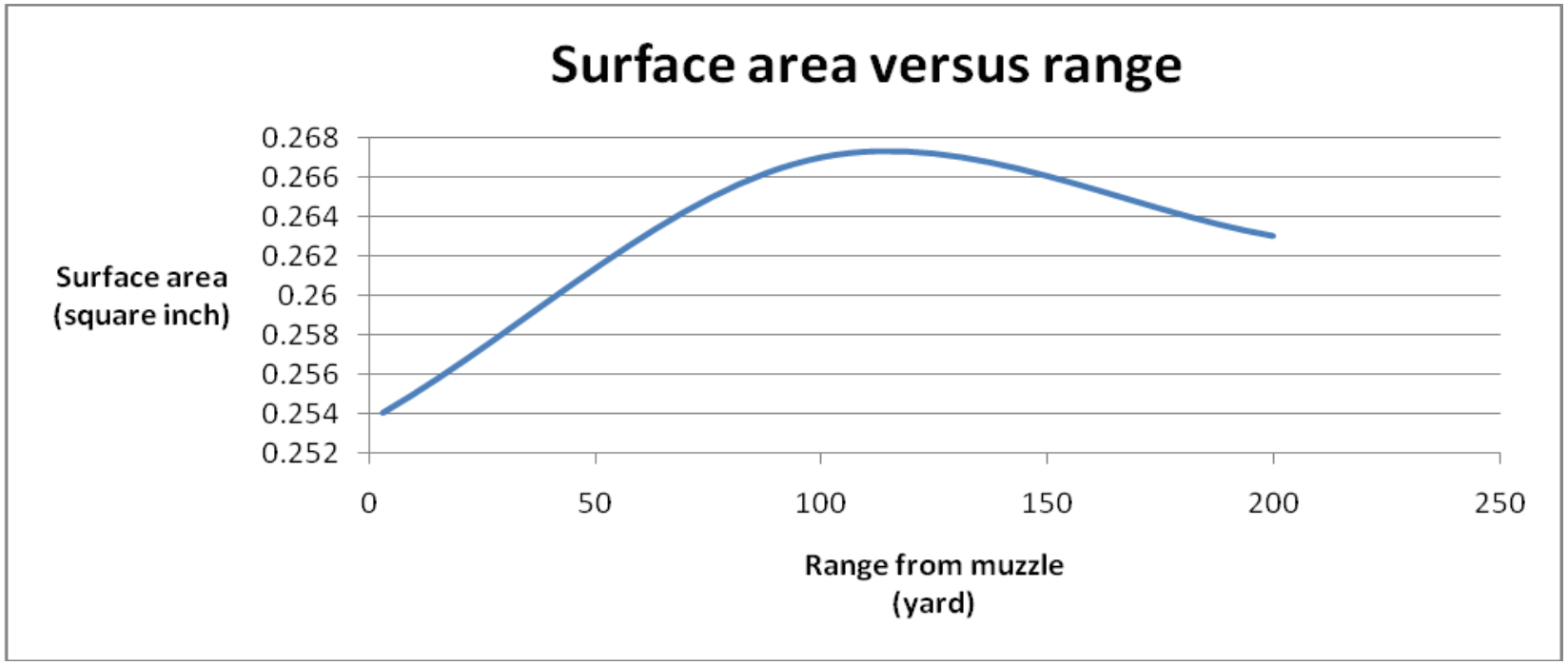
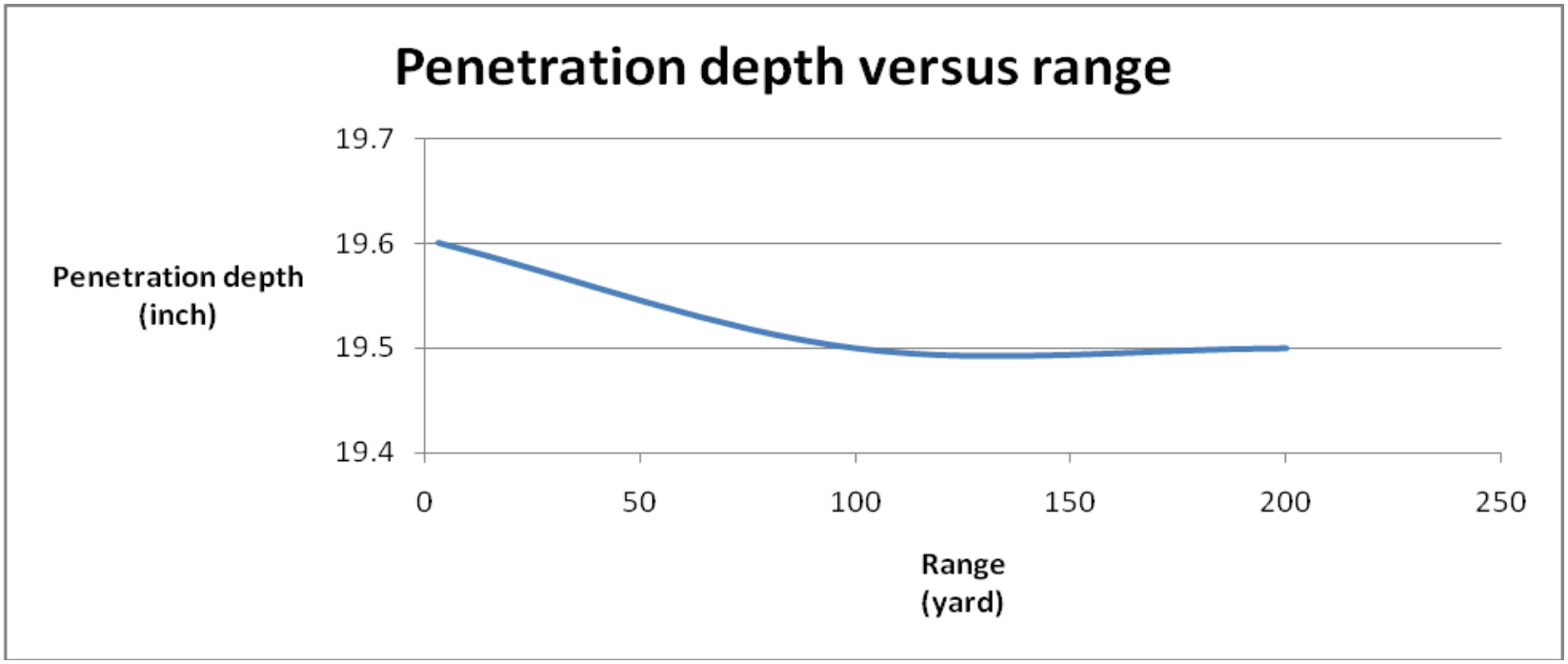
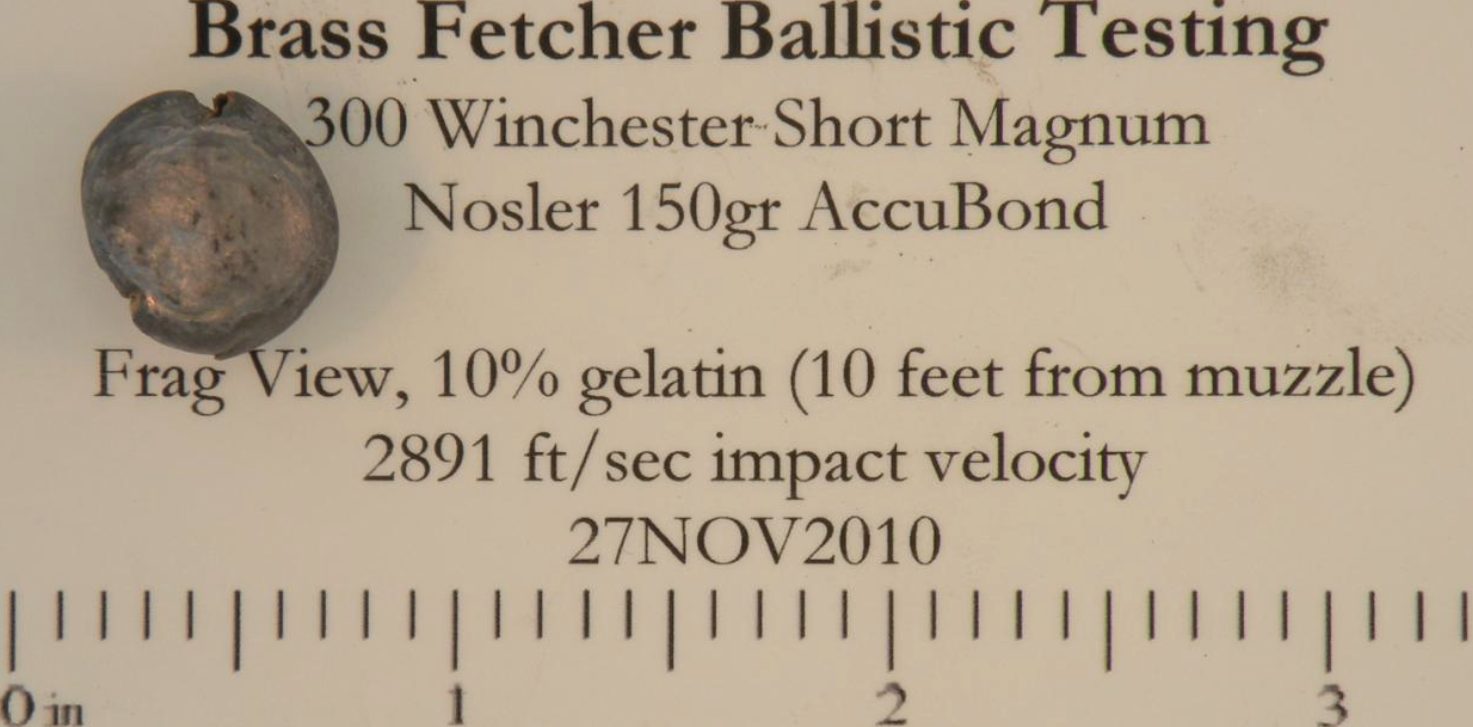
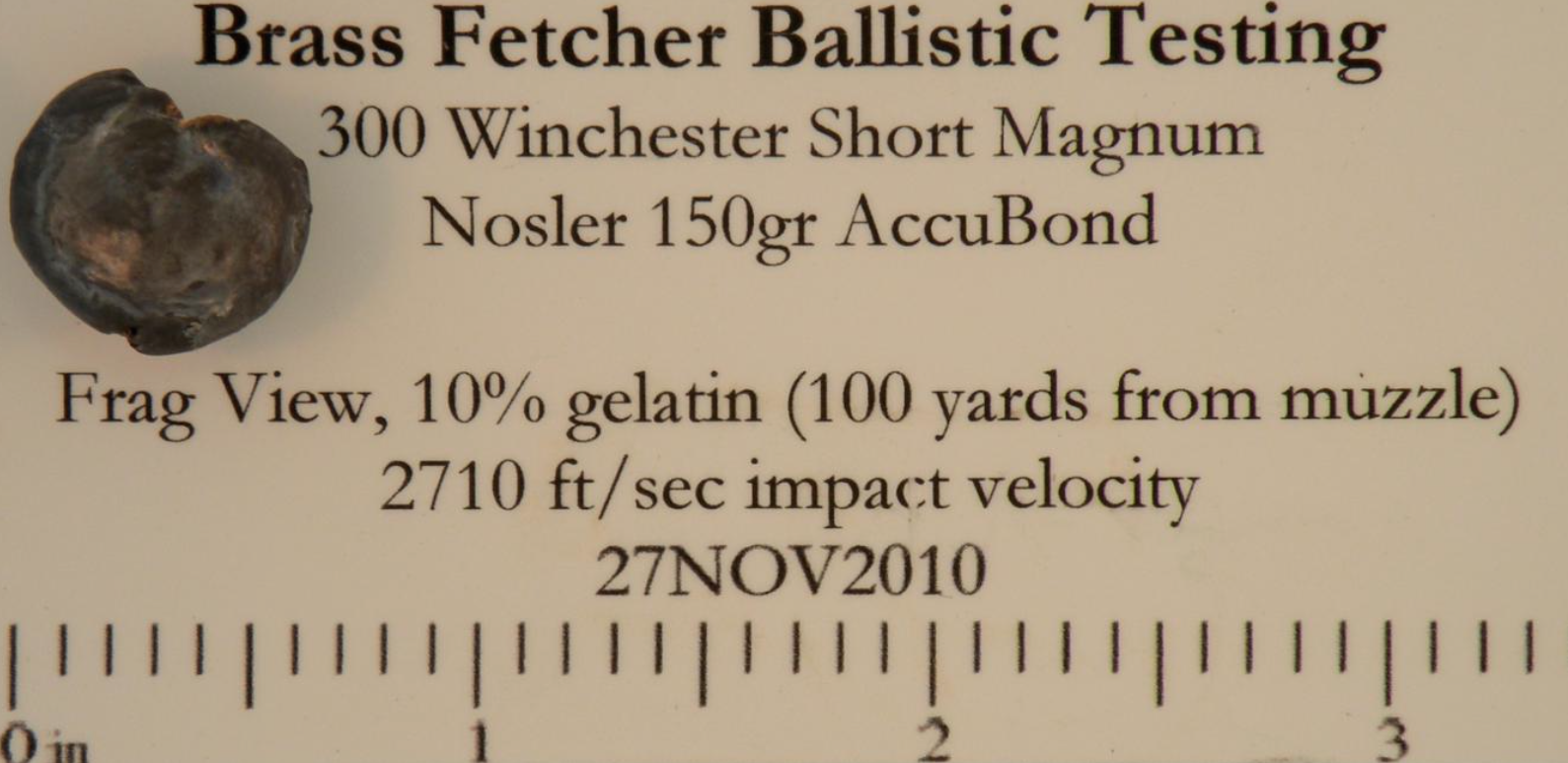
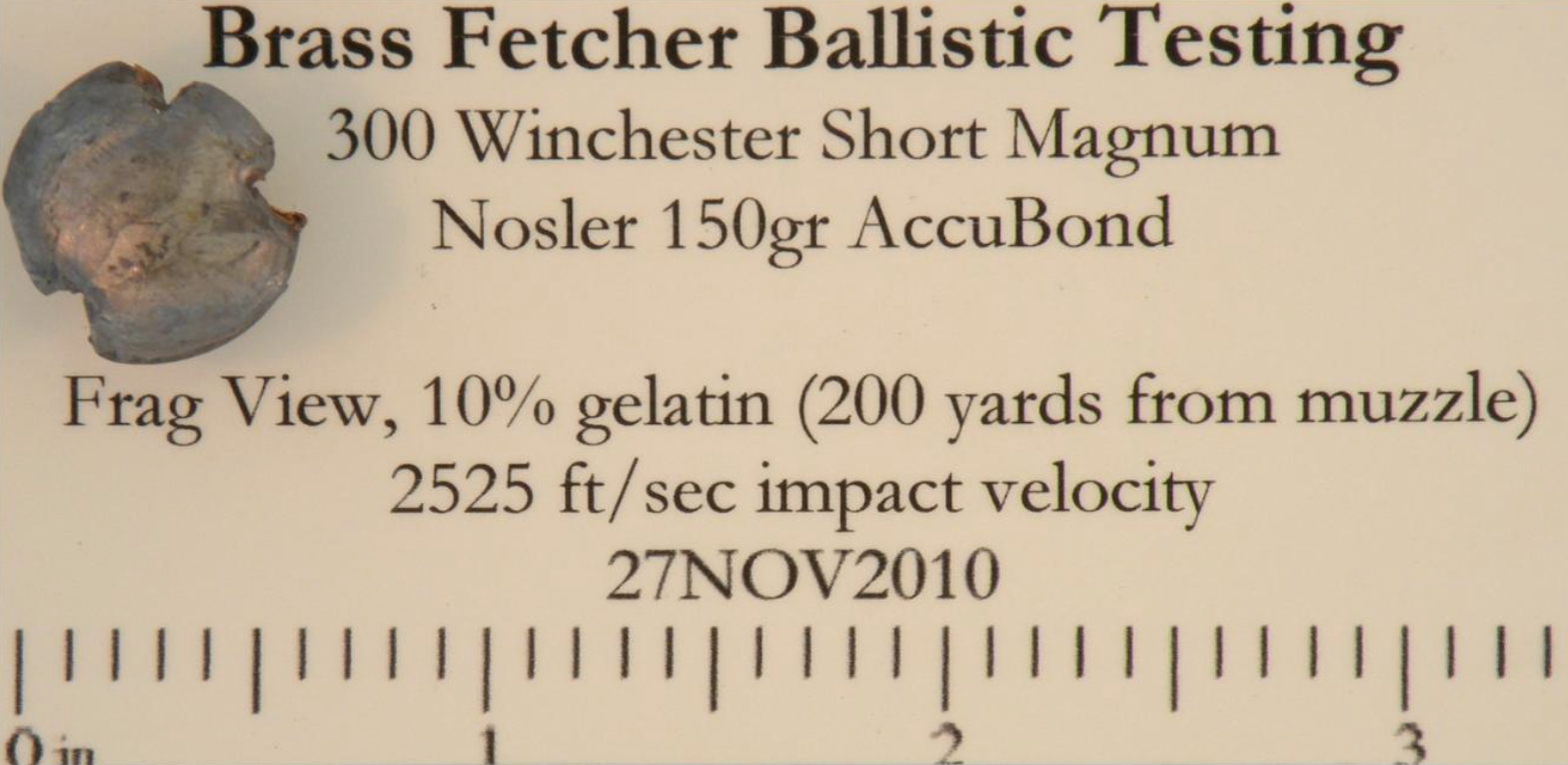
Conclusion
As tested, the Nosler 150gr AccuBond showed startling consistency in terminal performance from 0 to 200 yards from the muzzle. Despite the impact velocity being significantly different, the bullets penetrated to virtually the same penetration depth through a combination of overexpansion, underexpansion and weight loss through fragmentation. Particularly, we can see that the highest impact velocity (2891 ft/sec) produced a bullet with a surface area of 0.254 square inches and penetration of 19.6 inches. Compare this to the lowest impact velocity of the test event (2525 ft/sec) which produced a bullet with a surface area of 0.263 square inches and a penetration depth of 19.5 inches. Despite an impact velocity difference of 366 ft/sec, equal penetration depths were achieved by the fact that no additional kinetic energy was used to peel back the jacket and core material to the extent done on the 2891 ft/sec impact and the lower pressures on the slower bullet produced less fragmentation and allowed the heavier bullet to retain its velocity further into the block.




